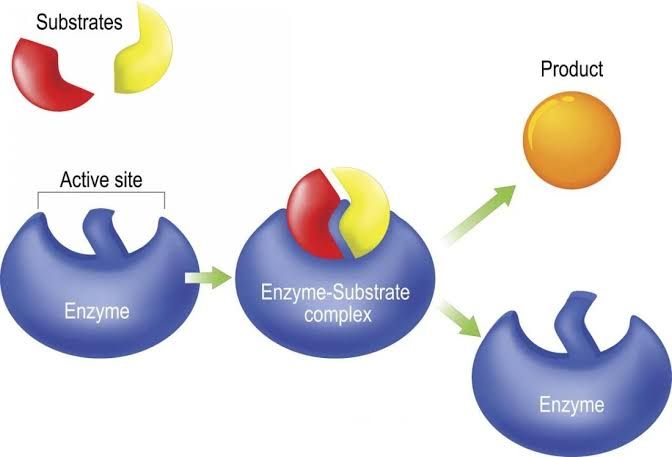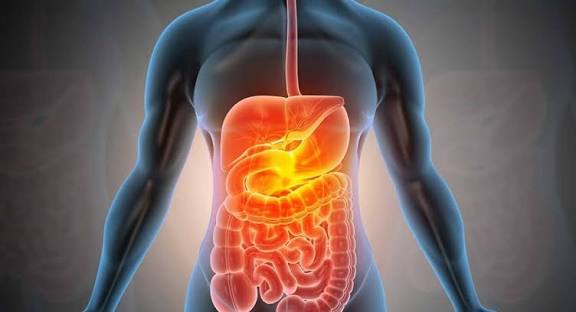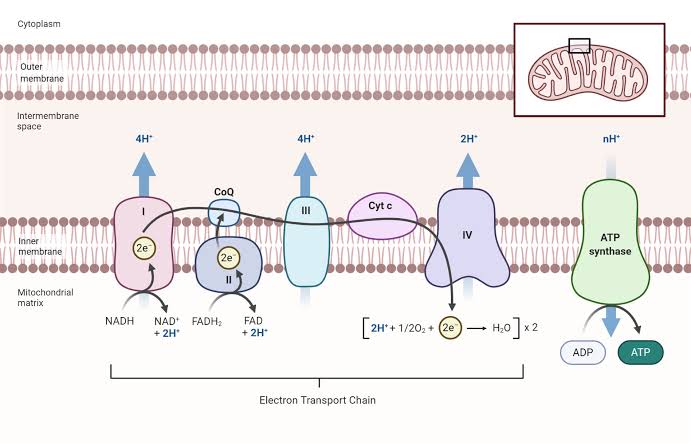
Enzymes are biological macromolecules, primarily proteins or RNA, that act as catalysts in biochemical reactions. They facilitate and accelerate chemical reactions within living organisms by lowering the activation energy required for the reaction to proceed. This allows metabolic processes to occur efficiently and specifically under mild conditions, such as physiological temperature and pH.
Nomenclature of Enzymes
The nomenclature of enzymes is derived from their substrates or the specific chemical reactions they catalyze. The suffix “-ase” is typically added to the name of the substrate or the type of reaction to create a systematic name. For instance, an enzyme that catalyzes the breakdown of starch is called amylase, derived from “amylum,” which means starch.
Enzymes can also be indexed using a classification system established by the International Union of Biochemistry and Molecular Biology (IUBMB). This system assigns each enzyme a unique identifier known as the Enzyme Commission (EC) number, which consists of four numbers separated by periods. The first number indicates the class of enzymes based on their mechanism of action.
Classification of Enzymes
Enzymes are classified into seven main categories based on the type of reaction they catalyze:
- Oxidoreductases: These enzymes catalyze oxidation-reduction reactions, where electrons are transferred between molecules. An example is lactate dehydrogenase, which converts lactate to pyruvate while reducing NAD+ to NADH.
- Transferases: These enzymes transfer functional groups from one molecule to another. An example is alanine transaminase (ALT), which transfers an amino group from alanine to α-ketoglutarate.
- Hydrolases: These enzymes catalyze hydrolysis reactions, breaking down compounds by adding water. An example is lipase, which breaks down fats into fatty acids and glycerol.
- Lyases: These enzymes remove groups from or add groups to double-bonded substrates without hydrolysis or oxidation. An example is fumarase, which catalyzes the conversion of fumarate to malate.
- Isomerases: These enzymes catalyze rearrangements within a molecule, converting it into its isomers. An example is phosphoglucose isomerase, which converts glucose-6-phosphate into fructose-6-phosphate.
- Ligases: These enzymes join two molecules together with covalent bonds while often utilizing ATP for energy. An example is DNA ligase, which joins Okazaki fragments during DNA replication.
- Translocases: These enzymes transport ions or molecules across membranes or within cells. An example is ATP synthase, which synthesizes ATP from ADP and inorganic phosphate during cellular respiration.
Each category can be further subdivided based on specific characteristics related to their substrates and mechanisms of action.
In summary, enzymes play crucial roles in biological processes through their catalytic functions and specificity towards substrates, with a systematic nomenclature that reflects their activity and classification based on reaction types.
Classification of Cofactors and Examples
1. Inorganic Cofactors (Metal Ions)
Inorganic cofactors are typically metal ions that play crucial roles in stabilizing enzyme structures and participating directly in enzymatic reactions. Common examples include:
- Iron (Fe²⁺/Fe³⁺): Vital for hemoglobin function and various enzymatic reactions, including those involved in electron transport.
- Magnesium (Mg²⁺): Essential for the activity of many enzymes, particularly those involved in DNA synthesis and ATP utilization.
- Zinc (Zn²⁺): Important for the structural integrity of many proteins and enzymes, including those involved in DNA synthesis and repair.
- Copper (Cu²⁺): Plays a role in iron metabolism and is essential for the function of certain enzymes like cytochrome c oxidase.
- Manganese (Mn²⁺): Functions as a cofactor for several enzymes involved in metabolism, including those that facilitate antioxidant defense.
2. Organic Cofactors (Coenzymes)
Organic cofactors are often derived from vitamins and assist enzymes in their catalytic activities. They can be further classified into several categories:
- NAD⁺ (Nicotinamide adenine dinucleotide): Involved in redox reactions, it carries electrons from one reaction to another, playing a key role in cellular respiration.
- FAD (Flavin adenine dinucleotide): Functions similarly to NAD⁺ in redox reactions, participating in various metabolic processes, including the Krebs cycle.
- Coenzyme A: Important for the synthesis and oxidation of fatty acids as well as the Krebs cycle; it plays a critical role in acyl group transfer.
- Vitamin B6 (Pyridoxine): Acts as a coenzyme in amino acid metabolism, facilitating transamination reactions which are vital for amino acid synthesis.
- Vitamin B12 (Cobalamin): Essential for DNA replication and red blood cell formation; it acts as a coenzyme for methylation reactions.
3. Other Organic Molecules
Some cofactors do not fit neatly into the above categories but are still essential for biochemical reactions:
- ATP (Adenosine triphosphate): While primarily known as an energy currency of the cell, ATP also serves as a cofactor by providing phosphate groups necessary for various biochemical reactions.
In summary, cofactors can be classified into inorganic cofactors such as metal ions and organic cofactors such as coenzymes derived from vitamins. Each type plays an essential role in facilitating enzymatic functions necessary for life.
General Properties of Enzymes
Enzymes are biological catalysts that play a crucial role in facilitating biochemical reactions within living organisms. Their properties can be categorized into several key aspects:
- Catalytic Property:
- Enzymes possess extraordinary catalytic power, meaning that even a small amount of enzyme can significantly accelerate the breakdown of large molecules into smaller ones or assist in the formation of larger molecules from smaller substrates.
- They do not initiate reactions nor alter the direction of the reaction; rather, they increase the rate at which equilibrium is reached.
- Importantly, enzymes remain unchanged after catalyzing a reaction, allowing them to be reused multiple times.
- Specificity:
- Enzymes exhibit high specificity, acting on particular substrates and catalyzing specific types of reactions. This specificity arises from the unique shape and structure of the enzyme’s active site.
- Different types of specificity include substrate specificity (specific to one substrate), group specificity (acting on similar substrates), geometric specificity (based on molecular shape), bond specificity (targeting specific bonds), cofactor specificity (requiring certain cofactors), and stereochemical specificity (interacting with specific isomers).
- Reversibility:
- Most enzymatic reactions are reversible, meaning that the products can revert back to reactants under certain conditions. The reversibility depends on cellular needs and environmental factors.
- In some instances, different enzymes may catalyze the forward and reverse reactions.
- Sensitivity to Temperature:
- Enzymes are sensitive to temperature changes. They typically have an optimum temperature range where their activity is maximized, generally between 20°C and 30°C for many enzymes.
- As temperature increases, enzyme activity rises until it reaches a peak; beyond this point, particularly at temperatures above 60-70°C, enzymes denature and lose their functional shape.
- Specificity to pH:
- Each enzyme has an optimal pH range where it functions best, usually between pH 6 and 8 for many enzymes. However, some enzymes operate effectively in more acidic or basic environments.
- Changes in pH can affect enzyme activity by altering the charge properties of amino acids at the active site or affecting substrate binding.
Important Functions of Enzymes
Enzymes serve numerous vital functions within biological systems:
- Digestion: Enzymes such as amylase break down carbohydrates into sugars; proteases like trypsin digest proteins into amino acids; and lipases help in fat digestion.
- Metabolism: Enzymes facilitate metabolic pathways by converting substrates into energy forms usable by cells through processes like glycolysis and Krebs cycle.
- DNA Replication and Repair: Enzymes such as helicase unwind DNA strands during replication while DNA polymerase synthesizes new strands by adding nucleotides.
- Detoxification: Liver enzymes metabolize toxins and drugs, aiding in their elimination from the body.
- Signal Transduction: Certain enzymes play roles in cellular signaling pathways that regulate various physiological processes.
- Muscle Contraction: Enzymes are involved in muscle contraction mechanisms by facilitating ATP hydrolysis necessary for muscle fiber movement.
- Hormone Production: Some enzymes are critical for synthesizing hormones that regulate numerous bodily functions.
In summary, enzymes are essential biomolecules characterized by their catalytic efficiency, specificity towards substrates, sensitivity to environmental conditions like temperature and pH, reversibility of reactions they catalyze, and diverse functional roles across various biological processes.
Km, Vmax, Transition State, and Activation Energy of Enzymes
- Km (Michaelis Constant): Km is a crucial parameter in enzyme kinetics that represents the substrate concentration at which the reaction rate is half of Vmax. It provides insight into the affinity of an enzyme for its substrate; a lower Km indicates a higher affinity, meaning that the enzyme can achieve half-maximal velocity at a lower concentration of substrate. Conversely, a higher Km suggests that more substrate is needed to reach this level of activity.
- Vmax (Maximum Velocity): Vmax refers to the maximum rate of an enzymatic reaction when all active sites of the enzyme are saturated with substrate. At this point, increasing the substrate concentration further does not increase the reaction rate because there are no free active sites available for additional substrate molecules to bind. Vmax is indicative of the catalytic efficiency of an enzyme under optimal conditions.
- Transition State: The transition state is a high-energy molecular configuration that occurs during a chemical reaction when reactants are transformed into products. It represents an intermediate state where bonds are being broken and formed, and it has higher energy than both the substrates and products involved in the reaction. Enzymes stabilize this transition state, thereby lowering the activation energy required for the reaction to proceed.
- Activation Energy (Ea): Activation energy is defined as the minimum amount of energy required for a chemical reaction to occur. In enzymatic reactions, enzymes provide an alternative pathway with a lower activation energy compared to non-catalyzed reactions. This reduction in activation energy allows more molecules to have sufficient energy to reach the transition state, thus increasing the rate at which products are formed.
Factors Affecting Enzyme Activity
Understanding these factors is crucial for both basic biological research and practical applications in biotechnology and medicine.
1. Temperature
Temperature plays a significant role in enzyme activity. Each enzyme has an optimal temperature range where it functions most efficiently. As temperature increases, the kinetic energy of molecules also increases, leading to more frequent collisions between enzymes and substrates, thus enhancing reaction rates. However, if the temperature exceeds a certain threshold (usually around 37°C for human enzymes), the enzyme may denature, losing its three-dimensional structure and functionality. Conversely, at low temperatures, enzyme activity decreases due to reduced molecular motion.
2. pH Level
The pH level of the environment can significantly affect enzyme activity as well. Each enzyme has an optimal pH at which it is most active; deviations from this pH can lead to decreased activity or denaturation. For example, pepsin, an enzyme found in the stomach, works best at a highly acidic pH (around 2), while trypsin operates optimally at a more neutral pH (around 8). Changes in pH can alter the ionization of amino acids at the active site of the enzyme, affecting substrate binding and catalytic efficiency.
3. Enzyme Concentration
The concentration of enzymes present in a reaction mixture directly influences the rate of reaction. Generally, increasing enzyme concentration leads to an increase in reaction rate, provided there is sufficient substrate available to bind with the enzymes. However, once all substrate molecules are bound to enzymes (saturation point), further increases in enzyme concentration will not affect the rate of reaction.
4. Substrate Concentration
Similar to enzyme concentration, substrate concentration also affects enzymatic activity. At low substrate concentrations, an increase in substrate will lead to a proportional increase in reaction rate as more active sites on enzymes become occupied. However, as substrate concentration continues to rise and approaches saturation levels (where all active sites are occupied), the rate of reaction reaches a maximum velocity (Vmax) beyond which it cannot increase regardless of further increases in substrate concentration.
5. Presence of Inhibitors or Activators
Inhibitors are substances that decrease enzymatic activity by binding to enzymes and preventing them from catalyzing reactions effectively. There are two main types of inhibitors: competitive inhibitors that compete with substrates for binding sites on the enzyme and non-competitive inhibitors that bind elsewhere on the enzyme regardless of substrate presence.
Conversely, activators enhance enzymatic activity by increasing either the affinity between enzymes and substrates or by stabilizing their active forms.
6. Cofactors and Coenzymes
Many enzymes require additional non-protein molecules known as cofactors (which can be metal ions like zinc or magnesium) or coenzymes (organic molecules such as vitamins) for their catalytic activity. These molecules assist in various ways such as stabilizing transition states or participating directly in chemical reactions.
In summary, the factors affecting enzyme activity include temperature, pH level, enzyme concentration, substrate concentration, presence of inhibitors or activators, and the requirement for cofactors or coenzymes.
Types of Enzyme Inhibition
Enzyme inhibition is a crucial concept in biochemistry and pharmacology, as it describes how certain molecules can decrease the activity of enzymes. There are several classifications of enzyme inhibition, which can be broadly categorized into reversible and irreversible types. Within these categories, there are specific mechanisms through which inhibition occurs.
1. Reversible Inhibition
Reversible inhibitors bind to enzymes through non-covalent interactions, allowing for the possibility of dissociation from the enzyme. This type of inhibition can be further divided into three main subtypes:
- Competitive Inhibition: In competitive inhibition, an inhibitor competes with the substrate for binding to the active site of the enzyme. The inhibitor typically has a structure similar to that of the substrate, allowing it to occupy the active site and prevent substrate binding. The effect of competitive inhibitors can be overcome by increasing the concentration of the substrate. As a result, while Vmax remains unchanged (the maximum rate of reaction), Km (the Michaelis constant) increases because a higher concentration of substrate is needed to reach half-maximal velocity.
- Non-competitive Inhibition: Non-competitive inhibitors bind to an allosteric site on the enzyme rather than the active site. This binding alters the conformation of the enzyme, reducing its activity regardless of whether substrate is present or not. Unlike competitive inhibition, increasing substrate concentration does not alleviate this type of inhibition. In this case, Vmax decreases because fewer enzyme molecules are available for catalysis, but Km remains unchanged since it does not affect substrate binding directly.
- Uncompetitive Inhibition: Uncompetitive inhibitors bind only to the enzyme-substrate complex (E-S complex), preventing it from converting into product (E-P complex). This type of inhibition is unique because it requires that the substrate first binds to the enzyme before the inhibitor can attach. Both Vmax and Km decrease in uncompetitive inhibition; thus, there is a reduction in both maximum reaction rate and affinity for substrate.
2. Irreversible Inhibition
Irreversible inhibitors form covalent bonds with enzymes or otherwise permanently alter their structure, leading to a permanent loss of enzymatic activity. Once bound, these inhibitors cannot be removed by dilution or dialysis. This type of inhibition is often utilized in drug design where long-lasting effects are desired.
- Covalent Modification: Many irreversible inhibitors act through covalent modification at specific amino acid residues within an enzyme’s active site or allosteric sites. For example, certain drugs may inhibit enzymes involved in critical metabolic pathways by permanently modifying them.
In summary, understanding these various types of enzyme inhibitions—competitive, non-competitive, uncompetitive (all under reversible inhibition), and irreversible—provides insight into how enzymatic reactions can be regulated and manipulated for therapeutic purposes.
Diagnostic Importance of Enzymes
Enzymes play a crucial role in diagnostic medicine due to their specificity and sensitivity in indicating various health conditions. The measurement of enzyme levels in serum, plasma, and other bodily fluids serves as a vital tool for diagnosing diseases, monitoring organ function, and assessing tissue damage. Here are the key aspects of the diagnostic importance of enzymes:
1. Enzyme Markers for Tissue Damage: Enzymes act as biomarkers that indicate tissue damage or disease processes. Elevated levels of specific enzymes can signal injury to particular organs. For instance, elevated cardiac enzymes such as troponin and creatine phosphokinase (CPK) are indicative of heart muscle damage following a myocardial infarction (heart attack). Similarly, increased liver enzymes like alanine aminotransferase (ALT) and aspartate aminotransferase (AST) suggest liver cell damage.
2. Specificity and Sensitivity: Enzymes exhibit high specificity for certain tissues or conditions, making them reliable indicators in diagnostics. For example, troponin is specific to cardiac muscle; thus, its elevation is strongly associated with heart injury. This specificity allows healthcare providers to differentiate between various types of tissue damage based on which enzymes are elevated.
3. Monitoring Disease Progression: Enzyme levels can be used to monitor the progression or resolution of diseases. In cases such as liver cirrhosis or acute pancreatitis, serial measurements of enzyme levels can help assess the severity of the condition and the effectiveness of treatment interventions.
4. Early Detection: Certain enzymes can provide early indications of disease before clinical symptoms manifest. For example, elevated levels of cardiac troponin may be detected within hours after a heart attack, allowing for prompt medical intervention.
5. Evaluation of Organ Function: Enzyme tests are essential for evaluating organ function. For instance, alkaline phosphatase (ALP) levels can indicate bone or liver disorders, while amylase and lipase are critical in assessing pancreatic function.
6. Genetic Disorders: Some enzyme deficiencies can lead to genetic disorders that may be diagnosed through enzyme assays. For example, phenylketonuria (PKU) is diagnosed by measuring phenylalanine hydroxylase activity.
In summary, the diagnostic importance of enzymes lies in their ability to serve as sensitive and specific markers for tissue damage and disease processes across various organ systems. Their measurement aids in early detection, monitoring disease progression, evaluating organ function, and diagnosing genetic disorders.
Principle of Drug Design Based on Substrate Analogy and Enzyme Inhibition
Introduction to Drug Design and Enzyme Inhibition
Drug design is a complex process that involves the creation of new medications based on the understanding of biological targets, particularly enzymes. Enzymes are proteins that catalyze biochemical reactions, and their activity can be modulated by various molecules, including substrates and inhibitors. The principle of drug design often employs substrate analogy, where drug candidates are designed to mimic the structure of natural substrates that bind to specific enzymes.
Understanding Enzyme Inhibition
Enzyme inhibitors are molecules that bind to enzymes and decrease their activity. They can be classified into two main categories: reversible and irreversible inhibitors. Reversible inhibitors bind non-covalently to enzymes, allowing for a dynamic interaction where the inhibitor can dissociate from the enzyme, restoring its activity. Irreversible inhibitors form covalent bonds with enzymes, permanently inactivating them until new enzyme molecules are synthesized.
The mechanism of inhibition can vary depending on whether the inhibitor binds to the free enzyme or the enzyme-substrate complex. This distinction is crucial in understanding how drugs can effectively target specific enzymes without affecting others.
Substrate Analogy in Drug Design
The concept of substrate analogy is fundamental in designing enzyme inhibitors. By mimicking the structure of a natural substrate, researchers can create compounds that fit into the active site of an enzyme, thereby blocking access to the actual substrate. This approach relies on detailed knowledge of the enzyme’s active site architecture and the interactions that stabilize substrate binding.
For instance, if an enzyme’s active site has specific amino acid residues that interact with its natural substrate through hydrogen bonds or hydrophobic interactions, a drug designed as a substrate analog would incorporate similar functional groups to exploit these interactions. This strategy not only enhances binding affinity but also increases specificity towards the target enzyme.
Designing Effective Inhibitors
When designing effective inhibitors based on substrate analogy, several factors must be considered:
- Binding Affinity: The inhibitor must have a high affinity for the target enzyme compared to other potential targets within the organism.
- Selectivity: Ideally, an effective inhibitor should selectively inhibit only those enzymes involved in disease processes while sparing similar enzymes in healthy tissues.
- Pharmacokinetics: The drug’s absorption, distribution, metabolism, and excretion (ADME) properties must be optimized to ensure adequate therapeutic levels are achieved without causing toxicity.
- Resistance Mechanisms: Understanding potential resistance mechanisms that pathogens may develop against enzyme inhibitors is crucial for long-term efficacy.
Applications in Medicine
Many clinically used drugs are designed using principles derived from substrate analogy and enzyme inhibition. For example:
- Methotrexate, used in chemotherapy and autoimmune diseases, inhibits dihydrofolate reductase by mimicking its natural substrate.
- Protease inhibitors, utilized in treating HIV/AIDS, block viral proteases essential for viral replication by resembling peptide substrates.
These drugs exemplify how targeted inhibition can lead to effective treatments with minimal side effects when designed carefully based on enzymatic mechanisms.
Conclusion
In summary, drug design based on substrate analogy leverages our understanding of enzyme structure and function to create potent inhibitors that specifically target pathological processes while minimizing off-target effects. This approach continues to be a cornerstone in developing new therapeutics across various medical fields.
Michaelis-Menten Kinetics
Michaelis-Menten kinetics describes the rate of enzyme-catalyzed reactions. In this model, enzymes bind to substrates to form an enzyme-substrate complex before converting them into products. This process is characterized by two key parameters: the maximum reaction velocity (vmax) and the Michaelis constant (KM). The vmax represents the rate at which the enzyme is working at full capacity when all active sites are occupied by substrate. The KM value indicates the substrate concentration at which the reaction velocity reaches half of vmax, reflecting the affinity of the enzyme for its substrate; a lower KM suggests higher affinity.
The relationship between substrate concentration and reaction velocity in Michaelis-Menten kinetics produces a hyperbolic curve when plotted graphically. At low substrate concentrations, small increases in substrate lead to significant increases in reaction velocity, indicating that many active sites are available for binding. As substrate concentration increases, however, fewer active sites are available, leading to diminishing returns in reaction velocity until a plateau is reached at vmax.
Differentiating Hyperbolic Curve from Lineweaver-Burk Plot
The hyperbolic curve generated from Michaelis-Menten kinetics provides a visual representation of how reaction velocity changes with varying substrate concentrations. This curve typically starts steeply and then flattens out as it approaches vmax, creating a characteristic rectangular hyperbola shape. While this plot effectively illustrates enzyme behavior under certain conditions, it can be challenging to accurately determine kinetic parameters like vmax and KM due to potential overlapping data points and less precision in estimating values.
In contrast, the Lineweaver-Burk plot—also known as a double reciprocal plot—transforms the data by plotting the reciprocal of reaction velocity against the reciprocal of substrate concentration. This transformation linearizes the relationship between these variables, allowing for easier determination of kinetic parameters. In this plot, both vmax and KM can be derived more accurately from the slope and intercepts of the line produced. The Lineweaver-Burk plot typically results in a straight line rather than a curve, making it visually distinct from the hyperbolic representation.
In summary, while both plots serve to illustrate enzyme kinetics, they do so in fundamentally different ways: one through a hyperbolic curve that reflects saturation effects and another through a linear format that simplifies parameter estimation.







